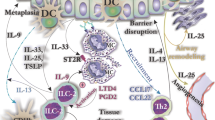Summary
In order to explore the role of activator protein-1 (AP-1) in the transcription of interleukin-5 (IL-5) gene regulated by protein kinase C (PKC) signal in peripheral blood T lymphocytes from asthmatic patient, T lymphocytes were isolated and purified from peripheral blood of each asthmatic patient. The T lymphocytes were randomly divided into 4 groups: group A (blank control), group B (treated with PKC agonist phorbol 12-myristate 13-acetate (PMA)), Group C (treated with PMA and AP-1 cis-element decoy oligodeoxynucleotides (decoy ODNs)), and group D (treated with PMA and AP-1 mutant decoy ODNs). The ODNs were transfected into the T cells of group C and D by cation liposome respectively. Reverse transcription-polymerase chain reaction (RT-PCR) was employed to assess IL-5 mRNA expression, and electrophoretic mobility shift assays (EMSA) for the activation of AP-1. The results showed that the activation of AP-1 (88 003. 58±1 626. 57) and the expression of IL-5 mRNA (0. 8300±0. 0294) in T lymphocytes stimulated with PMA were significantly higher than these in blank control (20 888. 47±1103. 56 and 0. 3050±0. 0208, respectively,P<0.01), while the indexes (23 219. 83±1 024. 86 and 0. 3425±0. 0171 respectively) of T lymphocytes stimulated with PMA and AP-1 decoy ODNs were significantly inhibited, as compared with group B (P<0.01). The indexes (87 107.41±1 342. 92 and 0. 8225±0 0222, respectively) in T lymphocytes stimulated with PMA and AP-1 mutant decoy ODNs did not exhibit significant changes, as compared with group B (P>0.05). The significant positive correlation was found between the activation of AP-1 and the expression of IL-5 mRNA (P<0.01). It was concluded that AP-1 might participate in the signal transduction of PKC-triggered transcription of IL-5 gene in asthmatic T lymphocytes. This suggests the activation of PKC/AP-1 signal transduction cascade of T lymphocytes may play an important role in the pathogenesis of asthma.
Similar content being viewed by others
References
O’Byrne P M, Inman M D, Parameswaran K. The trials and tribulations of IL-5, eosinophils, and allergic asthma. J Allergy Clin Immunol, 2001, 108:503
Mori A, Kaminuma O, Mikami Tet al. Transcriptional control of the IL-5 gene by human helper T cells: IL-5 synthesis is regulated independently from IL-2 or IL-4 synthesis. J Allergy Clin Immunol, 1999, 103: S429
Ogwa K, Kaminuma O, Okudaira Heet al. Transcriptional regulation of the IL-5 gene in peripheral T cells of asthmatic patients. Clin Exp Immunol, 2002, 130: 475
Liu C, Lu J, Tan Jet al. Human interleukin-5 expression is synergistically regulated by histone acetyltransferase CBP/p300 and transcription factors C/EBP, NFAT and AP-1. Cytokine, 2004, 27: 93
Krappmann D, Patke A, Heissmeyer Vet al. B-cell receptor- and phorbol ester-induced NF-kB and c-Jun N-Terminal kinase activation in B cells requires novel protein kinase C’s. Mol Cell Biol, 2001, 21: 6640
Xiong W, Xu Y, Zhang Zet al. Nuclear factor-kappaB in signal conduction of protein kinase C in T lymphocytes from an asthmatic guinea pig model. Chin Med J, 2002, 115: 685
Andrews N C, Faller D V. A rapid micropreparation technique for extraction of DNA-binding proteins from limiting numbers of mammalian cells. Nucleic Acids Res, 1991, 19: 2499
Jans D A, Xiao C Y, Lam M H. Nuclear targeting signal recognition: a key control point in nuclear transport? Bioessays, 2000, 22: 532
Bielinska A, Shivdasani R A, Zhang Let al. Regulation of gene expression with double-stranded phosphorothioate oligonucleotides. Science, 1990, 250: 997
Morishita R, Gibbons G H, Horiuchi Met al. A gene therapy strategy using a transcription factor decoy of the E2F binding site inhibits smooth muscle proliferationin vivo. Proc Natl Acad Sci USA, 1995, 92: 5855
Ahn J D, Morishita R, Kaneda Yet al. Transcription factor decoy for AP-1 reduces mesangial cell proliferation and extracellular matrix production in vitro and vivo. Gene Ther, 2004, 11: 916
Karin M, Liu Z, Zandi E. AP-1 function and regulation. Curr Opin Cell Biol, 1997, 9: 240
Chinenov Y, Kerppola T K. Close encounters of many kinds: Fos-Jun interactionsthat mediate transcription regulatory specificity. Oncogene, 2001, 20: 2438
Dzau V J. Transcription factor decoy. Circ Res, 2002, 90: 1234
Author information
Authors and Affiliations
Additional information
Guo Qi, male, born in 1968, M. D., Ph. D.
Rights and permissions
About this article
Cite this article
Qi, G., Yongjian, X. & Zhexiang, Z. Role of activator protein-1 in the transcription of interleukin-5 gene regulated by protein kinase C signal in asthmatic human T lymphocytes. Current Medical Science 25, 147–150 (2005). https://doi.org/10.1007/BF02873562
Received:
Published:
Issue Date:
DOI: https://doi.org/10.1007/BF02873562




